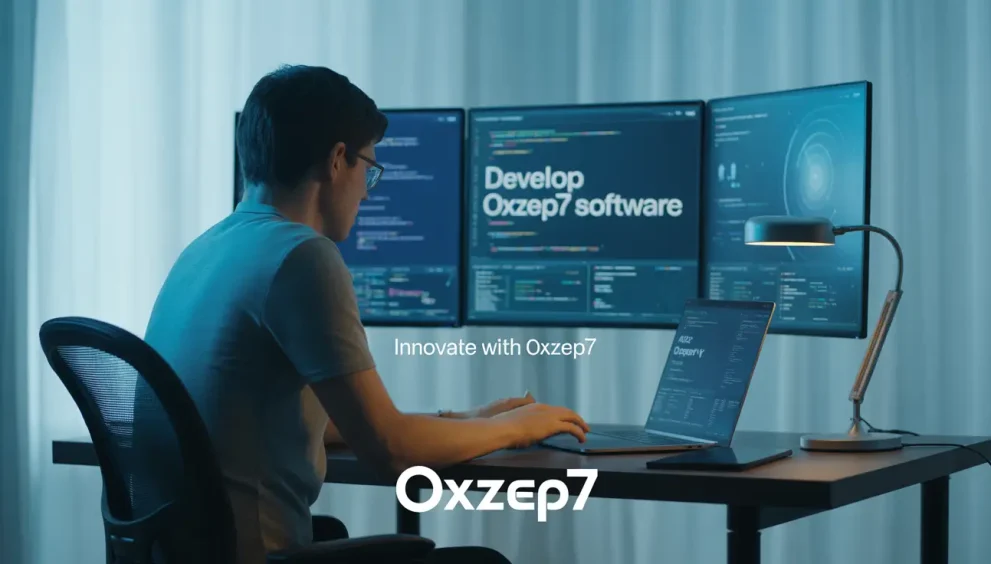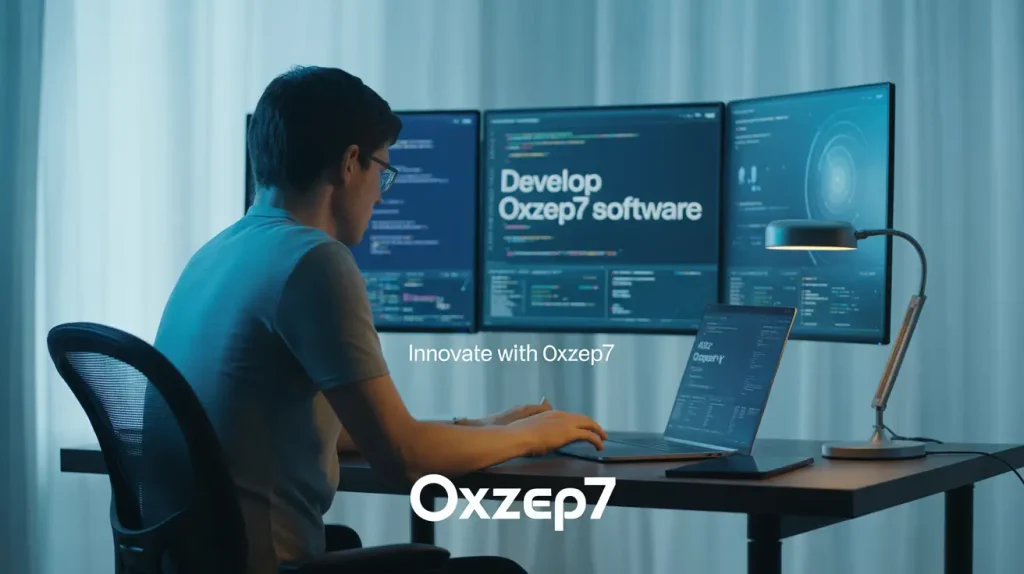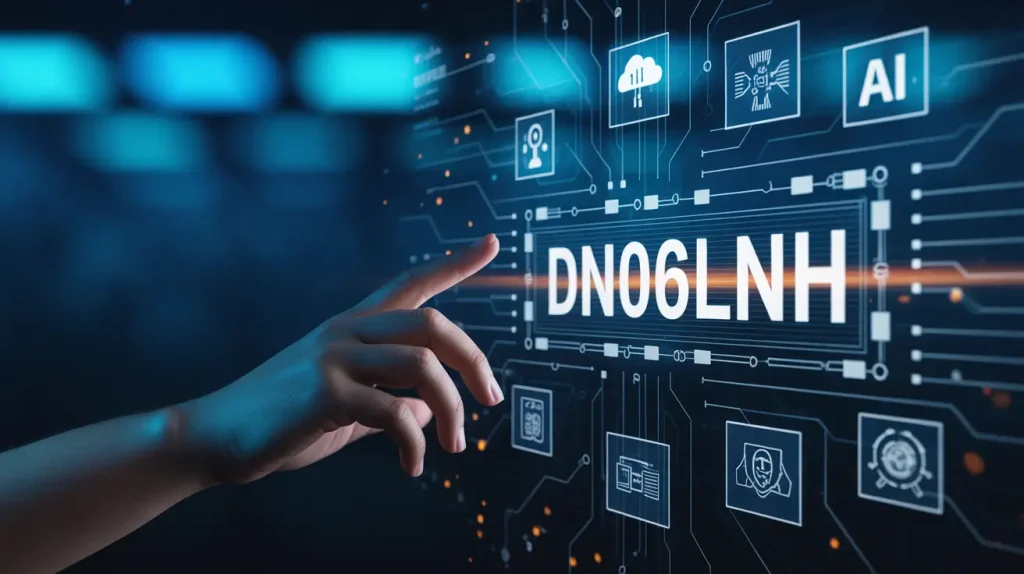Develop Oxzep7 Software 2025 | Powerful Future Solution

In the fast-paced digital age, software development has become the backbone of innovation. Businesses, organizations, and startups depend on efficient and intelligent systems to stay competitive. Among the new-age innovations in software design, Develop Oxzep7 Software stands out as a transformative approach that redefines how applications are built, optimized, and managed. It combines intelligence, speed, and flexibility — empowering developers to create seamless digital solutions that enhance productivity and user experience.
Understanding What Develop Oxzep7 Software Means
The phrase develop Oxzep7 software refers to the process of designing, coding, and deploying applications using the Oxzep7 framework or methodology. This term has become popular in modern software engineering circles, symbolizing next-generation software tools that emphasize automation, adaptability, and real-time performance.
In simple terms, Oxzep7 is not just a product — it represents a development mindset. It encourages building software that’s more dynamic, responsive, and capable of integrating AI-driven functionalities. Developers who use Oxzep7 principles focus on building applications that evolve continuously instead of remaining static after release.
Why Oxzep7 Software Development is Gaining Attention
Modern enterprises face constant pressure to innovate faster while maintaining quality and security. Traditional software development often struggles to keep up with rapidly changing technology demands. Oxzep7 offers a solution by merging traditional coding practices with modern digital intelligence.
Here’s why it’s becoming a preferred choice among developers and companies:
-
Scalability: Oxzep7-based software grows effortlessly with business needs.
-
Automation: Many processes, such as testing and deployment, are automated.
-
Efficiency: The framework reduces redundant coding tasks.
-
Integration: It supports advanced integrations with AI, APIs, and cloud services.
-
User-Centric Approach: Applications focus heavily on user behavior and personalization.
These advantages make Oxzep7 development a strategic approach for building future-ready applications.
Core Components of Oxzep7 Software
To understand the depth of this development approach, it’s important to look at the core components that define Oxzep7 software:
1. Modular Architecture
Oxzep7 encourages a modular design where each part of the system can function independently. This makes maintenance easier and allows developers to update specific modules without affecting the entire software.
2. Smart Automation Layer
Automation is at the heart of Oxzep7 software. From testing to deployment, the framework integrates automated pipelines that minimize human error and accelerate development timelines.
3. Adaptive Intelligence
Modern applications must learn and adapt to user behavior. Oxzep7 systems often integrate machine learning models that analyze user patterns, improving efficiency over time.
4. Cloud-Native Infrastructure
Instead of relying solely on local servers, Oxzep7 software leverages cloud computing to deliver scalable performance and uninterrupted uptime. This is especially beneficial for enterprises handling large volumes of data.
5. Continuous Optimization
Unlike conventional software, which often becomes outdated, Oxzep7 software evolves continuously. It uses real-time analytics to monitor performance, detect bugs, and suggest enhancements dynamically.
Steps to Develop Oxzep7 Software Successfully
Developing Oxzep7 software requires a structured, strategic approach. Here’s how expert developers usually proceed:
Step 1: Requirement Analysis
Every successful project begins with understanding what the client or organization truly needs. Developers conduct deep research to determine software goals, target users, performance expectations, and integration requirements.
Step 2: Designing the Framework
Once requirements are clear, the next stage involves creating a robust design blueprint. This includes UI/UX wireframes, backend architecture, database structures, and data flow diagrams that align with Oxzep7 principles.
Step 3: Coding and Implementation
At this stage, developers start writing clean, efficient code. Using Oxzep7’s modular design, different teams can work simultaneously on various components without causing conflicts.
Step 4: Testing and Quality Assurance
Quality assurance ensures the software performs perfectly across all environments. Automated testing plays a big role here, detecting bugs early and maintaining performance integrity.
Step 5: Deployment and Integration
The completed software is then deployed on cloud platforms or enterprise servers. Integration with APIs, third-party systems, and analytics tools follows next to ensure full functionality.
Step 6: Maintenance and Continuous Improvement
Oxzep7-based software is designed to evolve. Regular updates, performance monitoring, and data-driven optimization ensure that it remains relevant and powerful over time.
Key Benefits of Using the Oxzep7 Development Model
When businesses choose to develop software using the Oxzep7 approach, they experience significant long-term advantages:
Improved Productivity
By automating repetitive processes, teams can focus on creativity and innovation rather than mundane tasks. This results in faster delivery without compromising quality.
Enhanced Security
Oxzep7 integrates built-in security protocols and AI-driven monitoring, reducing vulnerabilities and preventing cyberattacks.
Cost Efficiency
Although initial setup might require investment, the automation and self-optimization features of Oxzep7 reduce long-term costs dramatically.
Superior User Experience
Applications developed under this model prioritize user engagement. Intelligent feedback systems and adaptive interfaces enhance satisfaction and retention.
Future-Readiness
Oxzep7’s modularity and machine learning compatibility ensure that the software remains scalable and adaptable to emerging technologies.
Industries That Can Benefit from Oxzep7 Software Development
The flexibility of Oxzep7 allows it to be applied across various sectors:
-
Healthcare: To build secure patient data systems and smart diagnostic tools.
-
Finance: For real-time fraud detection and intelligent transaction management.
-
E-commerce: To create dynamic shopping experiences and predictive analytics.
-
Education: For personalized learning systems and digital course management.
-
Technology Startups: To scale efficiently and deploy faster without heavy infrastructure.
By adopting Oxzep7 software, these industries can transform operations and deliver smarter solutions to their users.
Challenges Developers May Face
While Oxzep7 software brings innovation, it also introduces unique challenges that developers must manage:
-
Learning curve for integrating AI and automation tools.
-
Balancing customization with standardization.
-
Maintaining data privacy in cloud-based environments.
-
Continuous updates requiring long-term commitment from teams.
These challenges, however, can be overcome with skilled professionals and a clear roadmap.
Future of Software Development with Oxzep7
The future of software development is intelligent, automated, and adaptive — and Oxzep7 is at the forefront of this evolution. As businesses move toward digital transformation, frameworks like Oxzep7 will redefine how applications interact with users and data.
We can expect Oxzep7 to play a key role in areas like:
-
Real-time AI integration.
-
Predictive data management.
-
Seamless automation of enterprise workflows.
-
Enhanced cross-platform development tools.
With continuous innovation, Oxzep7 may become a standard for how modern applications are designed and deployed globally.
Frequently Asked Questions (FAQs)
1. What is the main purpose of developing Oxzep7 software?
The main goal is to build intelligent, automated, and adaptive applications that enhance performance, reduce human effort, and improve user experience.
2. Is Oxzep7 suitable for small businesses?
Yes. While it offers enterprise-level capabilities, its modular design allows startups and small businesses to scale gradually based on resources and growth.
3. Does Oxzep7 software require cloud deployment?
Most Oxzep7 systems are cloud-native for scalability, but developers can also deploy hybrid solutions if data security policies demand local storage.
4. How is Oxzep7 different from traditional software frameworks?
Unlike traditional methods, Oxzep7 integrates automation, machine learning, and real-time optimization to make software more intelligent and self-improving.
5. Can Oxzep7 software integrate with existing systems?
Absolutely. Its architecture supports integration through APIs, plugins, and middleware, making it compatible with most existing infrastructures.
Final Thoughts
Developing Oxzep7 software is not just about writing code — it’s about creating a digital ecosystem that learns, adapts, and evolves. With its emphasis on automation, intelligence, and scalability, Oxzep7 represents the future of software engineering. Businesses adopting this model can expect faster innovation, improved efficiency, and long-term competitive advantages.
In a world driven by technology, Oxzep7 stands as a beacon for the next generation of software developers who aim to build smarter, more connected, and more efficient systems.
For More Visits: Mymagazine
Also Read: Application Mobile DualMedia 2025 – Powerful Innovation

 English
English 
























































































































































![swimsuit edition [abbb] - 1.20 21 swimsuit edition - chapter](https://mymagazine.blog/wp-content/uploads/2025/09/swimsuit-edition-abbb-1.20-21-swimsuit-edition-chapter1-1024x574.webp)























































































































































































































































